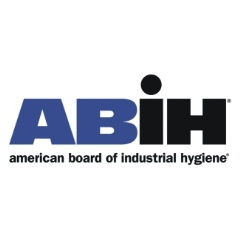Preventing Occupational and Community Exposure Risks to Cadmium
The American Board of Industrial Hygiene® (ABIH®) reminds workers and industry of the need to protect against exposure to potentially hazardous materials.
According to an Occupational Safety and Health Administration (OSHA) estimate, some 300,000 workers are exposed to cadmium in the United States alone.
Cadmium is a naturally occurring element found in the earth’s crust and is an important metal in the production of nickel-cadmium (Ni-Cd) rechargeable batteries. It is also used as a sacrificial corrosion-protection coating for iron and steel, and is used in various alloys, solar cells, plastic stabilizers and pigments.
According to an Occupational Safety and Health Administration (OSHA) estimate, some 300,000 workers are exposed to cadmium in the United States alone. The agency reports that worker exposure to cadmium can occur in all industry sectors, but mostly in manufacturing and construction. Workers may be exposed during smelting and refining of metals, and manufacturing batteries, plastics, coatings and solar panels. Electroplating, metal machining, welding and painting are operations associated with cadmium exposure. Workers involved in landfill operations, the recycling of electronic parts or the recycling of plastics may be exposed. Compost workers and waste collectors are also potentially exposed to dust which may contain cadmium. The incineration of municipal waste is yet another source of cadmium exposure.
“Exposure to cadmium and its compounds is a serious concern in many industries,” said David Roskelley, CIH® and Chair of ABIH®. “It is known to cause cancer and targets the body’s gastrointestinal, neurological, cardiovascular, renal, reproductive and respiratory systems according to OSHA. There are specific cadmium standards in place to protect workers from exposure risks. Certified Industrial Hygienists are uniquely qualified to conduct risks assessments and monitor exposures to protect both workers and communities from this hazard, while also keeping companies in regulatory compliance.”
Core competencies of the CIH® program include health risk analysis and hazard communication; chemical and biohazards; air sampling and instrumentational analysis; engineering controls and ventilation; and work environments and industrial processes. This knowledge, and the proper use of personal protective equipment and engineering controls, can be instrumental in reducing exposure risks to cadmium and other potentially hazardous substances.
To learn more about the American Board of Industrial Hygiene®, Certified Industrial Hygienist® credential or to locate a CIH® to perform industrial hygiene services, please visit www.ABIH.org, email abih@ABIH.org or call (517) 321-2638.
About the American Board of Industrial Hygiene ®
Since 1960, ABIH®, a not-for-profit corporation, has been the world’s largest organization for certifying professionals in the practice of industrial hygiene. ABIH® is the premier credentialing body responsible for ensuring high-quality certification including education, experience, examination, certification maintenance and ethics enforcement. Currently, more than 6800 people in 32 countries are certified to use the CIH® designation.
( Press Release Image: https://photos.webwire.com/prmedia/12710/206923/206923-1.jpg )
WebWireID206923
- Contact Information
- Paul Cochrane
- President
- Cochrane & Associates, LLC
- Contact via E-mail
This news content may be integrated into any legitimate news gathering and publishing effort. Linking is permitted.
News Release Distribution and Press Release Distribution Services Provided by WebWire.
